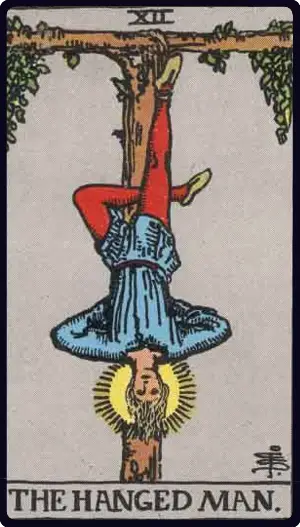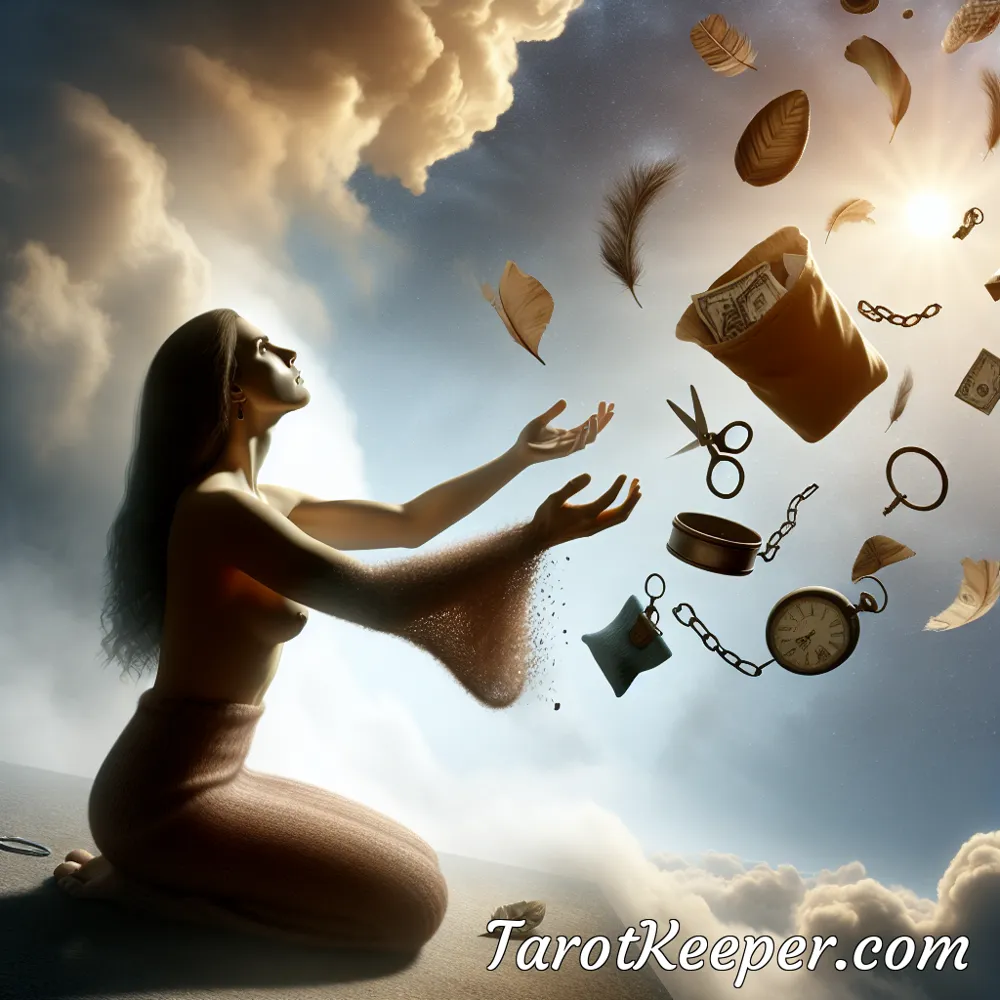


The Hanged Man is a card that can often evoke feelings of discomfort and confusion. When the Hanged Man appears in a past position in a Tarot reading, it can indicate that the querent has recently experienced a period of stagnation, sacrifice, or a shift in perspective. In this article, we will explore the significance of the Hanged Man in the past position and how it can influence the present and future.
In the Tarot, the Hanged Man is depicted as a figure suspended upside down, often with one leg crossed over the other to form an inverted triangle. This imagery represents a state of suspension and surrender, suggesting that the querent may have felt a sense of powerlessness or a need to let go of control in the past. The Hanged Man encourages the individual to embrace a new perspective and surrender to the flow of events, even when it feels uncomfortable or unfamiliar.
When the Hanged Man appears in the past position, it prompts the querent to reflect on a time when they may have felt stuck or forced to reassess their beliefs and values. This period of reflection may have been challenging, but it likely led to personal growth and a deeper understanding of oneself. The Hanged Man urges the individual to acknowledge the lessons learned during this time and recognize the value of the experience, even if it was difficult.

Another interpretation of the Hanged Man in the past position is the theme of sacrifice and letting go. The querent may have encountered situations where they needed to release attachments, expectations, or old patterns that were no longer serving them. This card signifies a willingness to make sacrifices in pursuit of a greater purpose or to create space for new opportunities to emerge. The Hanged Man reminds the individual that sometimes, letting go is an essential part of personal and spiritual growth.
At times, the appearance of the Hanged Man in the past position indicates a significant shift in the querent's perspective or worldview. They may have experienced a transformative event or revelation that challenged their existing beliefs and encouraged them to adopt a more open-minded approach. This shift in perspective could have been the catalyst for personal evolution and a newfound sense of clarity and purpose.
When the Hanged Man appears in the past position, it serves as a reminder to the querent to practice acceptance and patience. The challenges or periods of stagnation they may have faced in the past were essential for their growth and development. The Hanged Man encourages the individual to embrace the present moment, accept the past for what it was, and trust that everything unfolded as it was meant to. This card symbolizes the power of surrender and the wisdom that comes from relinquishing control.
As the past influences the present and future, the Hanged Man in the past position encourages the querent to integrate the lessons learned from their experiences and embrace change with an open heart. The time spent in suspension and reflection has prepared them for new opportunities and challenges that lie ahead. The Hanged Man signifies a readiness to move forward with a newfound sense of purpose and clarity.
When the Hanged Man appears in the past position, it may also indicate a release of resistance and an acceptance of the natural flow of life. The querent may have learned to surrender to the ebb and flow of their experiences, letting go of the need to force outcomes or control every aspect of their lives. This card reminds the individual of the power that comes from letting go and allowing life to unfold organically.
The Hanged Man in the past position signifies a period of surrender and sacrifice that has ultimately led to a sense of rebirth and renewal. The querent may have undergone a profound transformation, shedding old patterns and beliefs to make way for a new and improved version of themselves. The Hanged Man represents a state of transition and the potential for a fresh start in the present and future.
When the Hanged Man appears in the past position, it encourages the querent to trust in the divine timing of their experiences. The challenges and moments of suspension they encountered in the past were necessary for their personal and spiritual growth. This card serves as a reminder that everything unfolds at the right time and in the right way, urging the individual to have faith in the universe's plan for their life.
Lastly, the Hanged Man in the past position invites the querent to embrace vulnerability and recognize the strength that comes from surrender and self-reflection. The willingness to confront discomfort and uncertainty in the past has cultivated resilience and inner fortitude. This card symbolizes the merging of vulnerability and strength, acknowledging that true power often arises from the ability to surrender and trust in the unfolding of one's journey.
When the Hanged Man appears in the past position in a Tarot reading, it carries profound messages of surrender, sacrifice, and transformation. This card prompts the querent to reflect on their past experiences, acknowledge the lessons learned, and recognize the impact of those experiences on their present and future. Embracing the wisdom of the Hanged Man allows the individual to navigate life's challenges with grace and a deeper understanding of the interconnectedness of surrender and personal growth.
Have questions or need guidance? Reach out to us anytime at [email protected]
We're here to help you on your tarot journey.
© Copyright 2024 by TarotKeeper.com. All rights Reserved.